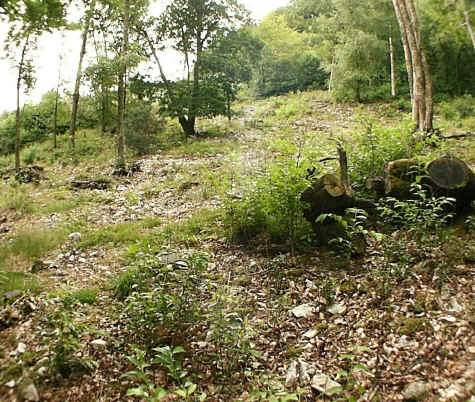The Wet Woodland Survey
The Stony Area Conclusions
|
The tallest and most dominant ground cover species is non-native cherry. The next two most dominant species are mosses with negligible height. This indicates that at the height of most of the non native cherries there is little competition from other species. Cherries tend to be fast growing, so with few competing species, they could rapidly increase their presence unless management action is taken. In June 2001 there were 27 plant species in the Stony Area, more than any other area in the Wet Woodland. However, the aggressive presence of non-native cherry could reduce this figure if left unmanaged. Non-native cherry grows rapidly and in dense patches, blocking the sunlight and preventing other young plants from growing. There is a significant number of different mosses (11) which occur in small amounts scattered widely across the area. The Stony Area lies adjacent to the Woodland Education Centre's Heathland and many heathland plant species are present in both areas. The most numerous tall trees were Silver Birch (Betula pendula) while the tree with greatest height was a Rowan (Sorbus aucuparia). Tall non-native Cherry (Prunus sp.) and Red Oak (Quercus rubra) are present in small numbers as aliens. |
Continue & compare with other area conclusions
